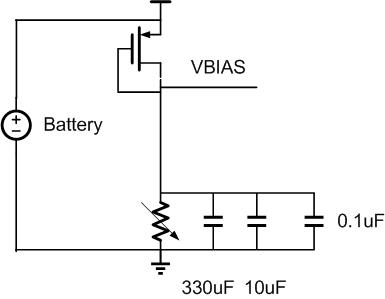analog_chip
Full Member level 1

Hi ,
Which biasing will be more noisier?
Resistor biasing using a potentiometer (acting as current source)
External Keithley low noise source.
Since resistor is passive , it should be low noise than keithley, right?
Which biasing will be more noisier?
Resistor biasing using a potentiometer (acting as current source)
External Keithley low noise source.
Since resistor is passive , it should be low noise than keithley, right?


